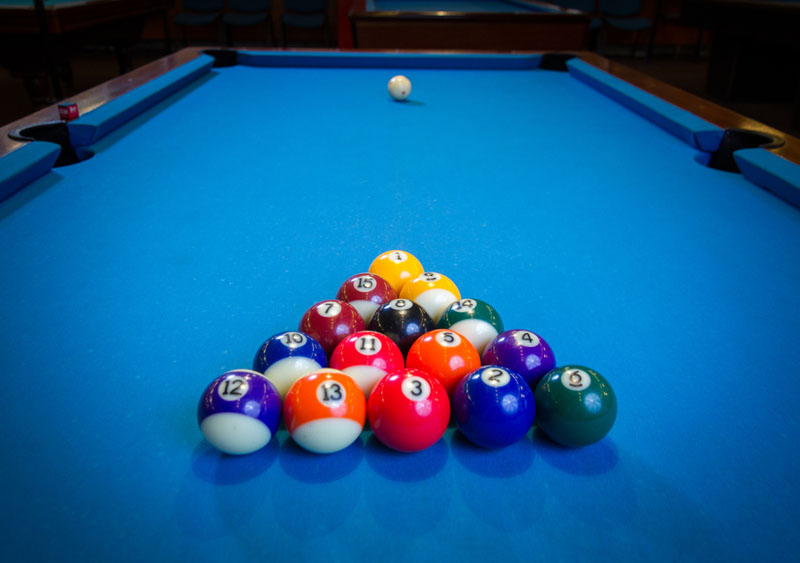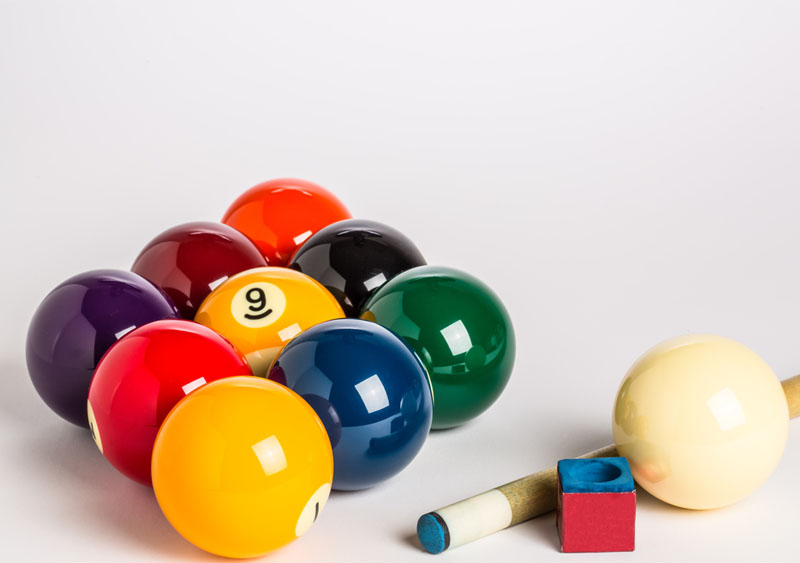Billiards has many game styles. Two popular pool variants are 8-ball and 9-ball. Both casual players and professionals across the world enjoy these games. They share some common elements. But, each game has unique rules, objectives, and strategies. Whether you’re a beginner or an experienced player, this matters. Knowing the differences between 8 ball vs 9 ball can enhance your enjoyment of the sport.
Objective
- In 8-ball, you must pocket all your designated balls—either solids (1-7) or stripes (9-15)—before your opponent does. Once all your balls are cleared, you must then legally sink the 8-ball to win. It’s important to remember, potting the 8-ball before clearing your balls is a loss.
- In 9-ball, the goal is to pocket the balls in numerical order, starting from 1 through 9. The player who legally pockets the 9-ball wins the game. However, the 9-ball must be struck after hitting the lowest-numbered ball on the table. If the 9-ball is illegally potted, it is simply placed back on the table and play continues.
Setup 8 Ball vs 9 Ball
- In 8 Ball the 15 balls are racked in a triangle with the 8-ball in the center. The apex ball is placed on the foot spot, and the remaining balls are placed randomly. Players must break the rack to start the game.

- The 9 balls are racked in a diamond shape with the 1-ball at the front and the 9-ball in the center. The apex ball is placed on the foot spot, and the remaining balls are positioned randomly. Players break the rack to start the game.

Number of Balls and Gameplay
- In 8-ball, the game uses 15 balls in total. The set has seven solid-colored balls (1-7), seven striped balls (9-15), and the black 8-ball. After the break, players are assigned either solids or stripes. The goal is to pocket all their balls before shooting the 8-ball. The need to plan for the final 8-ball shot, plus more balls, allows for a more strategic, defensive style of play.
- 9-ball, on the other hand, uses only nine balls numbered 1 through 9. The game is fast-paced. Players must hit the lowest-numbered ball with each shot. Players aim to either pocket the next ball in the sequence or create a setup for future shots. The game typically has fewer defensive plays. The goal is to make precise, offensive shots.
Potting the 8 Ball vs 9 Ball
- In 8-ball, the black 8 ball holds a critical role in determining the winner. If a player pots the 8-ball illegally by mistake, they lose the game. This rule makes strategy and planning crucial. A mistake with the 8-ball can instantly cost the game.
- In contrast, the 9-ball allows for a bit more flexibility when it comes to the final ball. If the 9-ball is potted illegally , the ball is placed back on the table, and play continues. The game ends only when the 9-ball is legally pocketed. This must be done by hitting the lowest-numbered ball first, in the correct sequence.
Skill and Strategy
- 8-ball requires a careful balance of offensive and defensive strategies. Players must clear all solids or all stripes before shooting for the 8-ball. So, they can take a more methodical approach to control the table. It’s common to block an opponent’s shots. Players do this by placing the cue ball or hiding behind other balls. Defensive play is as important as offensive shot-making. Good positioning is key to long-term success.
- In contrast, 9-ball is known for its fast-paced, offensive style of play. Players must hit the lowest-numbered ball on the table first. So, precision and accuracy are key. Defensive play has less room. Each shot must advance the player toward pocketing the next ball in sequence. Quick thinking and accurate shots are key in 9-ball. It makes positioning for the next shot critical.
8 Ball vs 9 Ball Fouls
8 Ball Fouls
In 8-ball, fouls lead to a ball-in-hand for the opponent. Common fouls include:
- Failing to hit your designated group of balls (solids or stripes).
- Scratching (pocketing the cue ball).
- Accidentally potting the 8-ball at the wrong time.
After a foul, the opponent can place the cue ball anywhere on the table. This gives them a big advantage.
9 Ball Fouls
In 9-ball, fouls give ball-in-hand. But, players must hit the lowest-numbered ball. Common fouls in 9-ball include:
- Failing to hit the lowest-numbered ball on the table first.
- Scratching (pocketing the cue ball).
- Failing to drive any ball to a rail after the cue ball makes contact with the target ball.
Players must aim for the lowest-numbered ball after a ball-in-hand foul. This emphasizes precision and strategy.
Popularity and Tournaments
- 8-ball is widely played in amateur leagues and for fun. So, it’s one of the most accessible pool games. Major tournaments, like the World Eight-Ball Pool Championship, draw players from all over. The game’s popularity in local bars and clubs adds to its appeal. Newcomers can easily join in and learn the rules.
- 9-ball has a strong presence in pro circuits. It often features in high-stakes tournaments, like the World Pool Championship and the U.S. Open 9-Ball Championships. The game’s speed and focus on skill make it a favorite among pros and fans. These tournaments’ excitement shows the elite competition of 9-ball.
Conclusion
In summary, 8-ball and 9-ball are popular pool games. They each offer unique experiences and challenges. 8-ball is about sinking a complete set of balls, then the 8-ball to win. 9-ball, in a fast-paced game, requires sinking the balls in numerical order. The strategies and rules of each game differ significantly. 8-ball allows for defensive plays. 9-ball demands quick, accurate shot-making. Both games have their place in billiards. They captivate players and fans alike. Some prefer the strategy of 8-ball. Others enjoy the fast pace of 9-ball.







